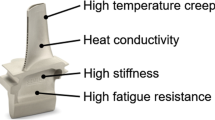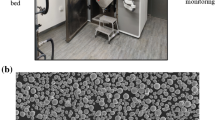Abstract
Scan strategy plays a key role in the densification of laser powder bed fusion (LPBF) processed materials. Still, it garnered less attention from researchers worldwide doing parameter optimization who focus more on quantitative parameters like laser power and scan speed. The repeatability of the LPBF process is also not studied widely, despite being a vital factor in furthering its industrial application. Keeping these gaps in mind, this study investigates the effects of various scan strategies on the densification behavior during LPBF processing of AlSi10Mg. Multiple cubic samples are manufactured using different scan strategies and their relative density analyzed. For each scan strategy, the values of laser power, scan speed and scan spacing were changed as well to provide a comprehensive picture. It was observed that the relative density of the samples increased as more lateral motion was added to the laser path, increasing the lateral overlapping of the tracks. The optical microscopic studies were conducted as well on the polished samples to understand the pore characteristics and microstructural effects of scan strategy variation, which showed that increased lateral motion not only reduced the porosity but altered pore geometry and other characteristics as well. Finally, using the optimized process parameters and scan strategy, multiple samples are manufactured and relative density was calculated to check the repeatability of the process. It was seen that the LPBF process is a highly non-repeatable process as the mean density observed was 99.5126% with mean absolute deviation of 0.1946% and standard deviation of 0.2376%.









Similar content being viewed by others
Data availability
Data will be made available on reasonable request.
References
Davoodi E, Montazerian H, Mirhakimi AS, Zhianmanesh M, Ibhadode O, Shahabad SI, Esmaeilizadeh R, Sarikhani E, Toorandaz S, Sarabi SA, Nasiri R, Zhu Y, Kadkhodapour J, Li B, Khademhosseini A, Toyserkani E (2022) Additively manufactured metallic biomaterials. Bioact Mater 15:214–249. https://doi.org/10.1016/j.bioactmat.2021.12.027
Blakey-Milner B, Gradl P, Snedden G, Brooks M, Pitot J, Lopez E, Leary M, Berto F (2021) Du Plessis, Metal additive manufacturing in aerospace: a review. Mater Des 209:110008. https://doi.org/10.1016/j.matdes.2021.110008
Busachi A, Erkoyuncu J, Colegrove P, Drake R, Watts C, Martina F (2016) Defining Next-Generation Additive Manufacturing Applications for the Ministry of Defence (MoD). Procedia CIRP 55:302–307. https://doi.org/10.1016/j.procir.2016.08.029
Zhao N, Parthasarathy M, Patil S, Coates D, Myers K, Zhu H, Li W (2023) Direct additive manufacturing of metal parts for automotive applications. J Manuf Syst 68:368–375. https://doi.org/10.1016/j.jmsy.2023.04.008
Kreitcberg A, Brailovski V, Prokoshkin S (2018) New biocompatible near-beta Ti-Zr-Nb alloy processed by laser powder bed fusion: process optimization. J Mater Process Technol 252:821–829. https://doi.org/10.1016/j.jmatprotec.2017.10.052
DebRoy T, Wei HL, Zuback JS, Mukherjee T, Elmer JW, Milewski JO, Beese AM, Wilson-Heid A, De A, Zhang W (2018) Additive manufacturing of metallic components – process, structure and properties. Prog Mater Sci 92:112–224. https://doi.org/10.1016/j.pmatsci.2017.10.001
Makoana NW, Yadroitsava I, Möller H, Yadroitsev I (2018) Characterization of 17-4ph single tracks produced at different parametric conditions towards increased productivity of lpbf systems—the effect of laser power and spot size upscaling. Met (Basel) 8. https://doi.org/10.3390/met8070475
Rashid R, Masood SH, Ruan D, Palanisamy S, Rahman Rashid RA, Brandt M (2017) Effect of scan strategy on density and metallurgical properties of 17-4PH parts printed by selective laser melting (SLM). J Mater Process Technol 249:502–511. https://doi.org/10.1016/j.jmatprotec.2017.06.023
Yadroitsev I, Krakhmalev P, Yadroitsava I (2014) Selective laser melting of Ti6Al4V alloy for biomedical applications: temperature monitoring and microstructural evolution. J Alloys Compd 583:404–409. https://doi.org/10.1016/j.jallcom.2013.08.183
Wei HL, Mukherjee T, DebRoy T (2016) Grain growth modeling for additive manufacturing of nickel based superalloys. Proc 6th Int Conf Recryst Grain Growth ReX GG 2016 265–269. https://doi.org/10.1007/978-3-319-48770-0_39
Darvish K, Chen ZW, Pasang T (2016) Reducing lack of fusion during selective laser melting of CoCrMo alloy: Effect of laser power on geometrical features of tracks. Mater Des 112:357–366. https://doi.org/10.1016/j.matdes.2016.09.086
Monroy K, Delgado J, Ciurana J (2013) Study of the pore formation on CoCrMo alloys by selective laser melting manufacturing process. Procedia Eng 63:361–369. https://doi.org/10.1016/j.proeng.2013.08.227
Takata N, Kodaira H, Sekizawa K, Suzuki A, Kobashi M (2017) Change in microstructure of selectively laser melted AlSi10Mg alloy with heat treatments. Mater Sci Eng A 704:218–228. https://doi.org/10.1016/j.msea.2017.08.029
Silbernagel C, Ashcroft I, Dickens P, Galea M (2018) Electrical resistivity of additively manufactured AlSi10Mg for use in electric motors. Addit Manuf 21:395–403. https://doi.org/10.1016/j.addma.2018.03.027
Mukherjee T, Wei HL, De A, DebRoy T (2018) Heat and fluid flow in additive manufacturing – part II: powder bed fusion of stainless steel, and titanium, nickel and aluminum base alloys. Comput Mater Sci 150:369–380. https://doi.org/10.1016/j.commatsci.2018.04.027
Dai D, Gu D (2016) Influence of thermodynamics within molten pool on migration and distribution state of reinforcement during selective laser melting of AlN/AlSi10Mg composites. Int J Mach Tools Manuf 100:14–24. https://doi.org/10.1016/j.ijmachtools.2015.10.004
Narra SP, Scime L, Beuth J (2018) Integrated Control of Melt Pool Geometry and microstructure in laser powder Bed Fusion of AlSi10Mg. Metall Mater Trans Phys Metall Mater Sci 49:5097–5106. https://doi.org/10.1007/s11661-018-4804-z
Hu H, Ding X, Wang L (2016) Numerical analysis of heat transfer during multi-layer selective laser melting of AlSi10Mg, Optik (Stuttg). 127:8883–8891. https://doi.org/10.1016/j.ijleo.2016.06.115
Salmi A, Piscopo G, Atzeni E, Minetola P, Iuliano L (2018) On the effect of part orientation on stress distribution in AlSi10Mg specimens fabricated by laser powder Bed Fusion (L-PBF), Procedia CIRP. 67:191–196. https://doi.org/10.1016/j.procir.2017.12.198
Hadadzadeh A, Amirkhiz BS, Odeshi A, Mohammadi M (2018) Dynamic loading of direct metal laser sintered AlSi10Mg alloy: strengthening behavior in different building directions. Mater Des 159:201–211. https://doi.org/10.1016/j.matdes.2018.08.045
Aboulkhair NT, Maskery I, Tuck C, Ashcroft I, Everitt NM (2016) On the formation of AlSi10Mg single tracks and layers in selective laser melting: microstructure and nano-mechanical properties. J Mater Process Technol 230:88–98. https://doi.org/10.1016/j.jmatprotec.2015.11.016
Aboulkhair NT, Everitt NM, Ashcroft I, Tuck C (2014) Reducing porosity in AlSi10Mg parts processed by selective laser melting. Addit Manuf 1:77–86. https://doi.org/10.1016/j.addma.2014.08.001
Aboulkhair NT, Maskery I, Tuck C, Ashcroft I, Everitt NM (2016) The microstructure and mechanical properties of selectively laser melted AlSi10Mg: the effect of a conventional T6-like heat treatment. Mater Sci Eng A 667:139–146. https://doi.org/10.1016/j.msea.2016.04.092
Salandari-Rabori A, Wang P, Dong Q, Fallah V (2021) Enhancing as-built microstructural integrity and tensile properties in laser powder bed fusion of AlSi10Mg alloy using a comprehensive parameter optimization procedure. Mater Sci Eng A 805:140620. https://doi.org/10.1016/j.msea.2020.140620
Denlinger ER, Gouge M, Irwin J, Michaleris P (2017) Thermomechanical model development and in situ experimental validation of the laser powder-Bed Fusion process. Addit Manuf 16:73–80. https://doi.org/10.1016/j.addma.2017.05.001
Larimian T, Kannan M, Grzesiak D, AlMangour B, Borkar T (2020) Effect of energy density and scanning strategy on densification, microstructure and mechanical properties of 316L stainless steel processed via selective laser melting. Mater Sci Eng A 770:138455. https://doi.org/10.1016/j.msea.2019.138455
Ali H, Ghadbeigi H, Mumtaz K (2018) Effect of scanning strategies on residual stress and mechanical properties of selective laser melted Ti6Al4V. Mater Sci Eng A 712:175–187. https://doi.org/10.1016/j.msea.2017.11.103
Parry L, Ashcroft IA, Wildman RD (2016) Understanding the effect of laser scan strategy on residual stress in selective laser melting through thermo-mechanical simulation. Addit Manuf 12:1–15. https://doi.org/10.1016/j.addma.2016.05.014
Arısoy YM, Criales LE, Özel T, Lane B, Moylan S, Donmez A (2017) Influence of scan strategy and process parameters on microstructure and its optimization in additively manufactured nickel alloy 625 via laser powder bed fusion. Int J Adv Manuf Technol 90:1393–1417. https://doi.org/10.1007/s00170-016-9429-z
Carter LN, Martin C, Withers PJ, Attallah MM (2014) The influence of the laser scan strategy on grain structure and cracking behaviour in SLM powder-bed fabricated nickel superalloy. J Alloys Compd 615:338–347. https://doi.org/10.1016/j.jallcom.2014.06.172
Luo Q, Huang N, Fu T, Wang J, Bartles DL, Simpson TW, Beese AM (2023) New insight into the multivariate relationships among process, structure, and properties in laser powder bed fusion AlSi10Mg. Addit Manuf 77:103804. https://doi.org/10.1016/j.addma.2023.103804
Kumar MS, Yang C-H, Farooq MU, Kavimani V, Adesoji AA (2023) Enhanced structural integrity of laser powder Bed Fusion based AlSi10Mg parts by attaining defect free melt pool formations. Sci Rep 13:16672. https://doi.org/10.1038/s41598-023-43718-2
Yang T, Chen X, Liu T, Wei H, Zhu Z, Liao W (2024) Effect of processing parameters on overhanging channel forming quality during laser powder bed fusion of AlSi10Mg. J Manuf Process 109:537–548. https://doi.org/10.1016/j.jmapro.2023.12.052
Schmitt M, Schlick G, Schilp J (2022) Repeatability of Dimensional Accuracy and Mechanical properties in Powder Bed Fusion of 16MnCr5 using a laser Beam. Procedia CIRP 114:94–99. https://doi.org/10.1016/j.procir.2022.10.013
Acknowledgements
The authors gratefully acknowledge the funding support by DST-FIST (Grant no. SR/FST/ETII-066).
Author information
Authors and Affiliations
Contributions
A.K.M. did the conceptualization, experiments, writing-original draft. A.K. did the supervision and reviewed the manuscript.
Corresponding author
Ethics declarations
Competing interests
The authors declare no conflict of interest with any person or organization.
Additional information
Publisher’s Note
Springer Nature remains neutral with regard to jurisdictional claims in published maps and institutional affiliations.
Rights and permissions
Springer Nature or its licensor (e.g. a society or other partner) holds exclusive rights to this article under a publishing agreement with the author(s) or other rightsholder(s); author self-archiving of the accepted manuscript version of this article is solely governed by the terms of such publishing agreement and applicable law.
About this article
Cite this article
Mishra, A.K., Kumar, A. Scan strategy optimization and repeatability testing during laser powder bed fusion additive manufacturing of AlSi10Mg. Prod. Eng. Res. Devel. (2024). https://doi.org/10.1007/s11740-024-01288-w
Received:
Accepted:
Published:
DOI: https://doi.org/10.1007/s11740-024-01288-w




